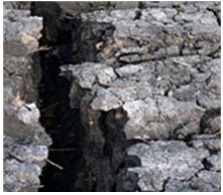Chapter: Mechanical : Robotics : Sensors and Machine Vision
Introduction to Sensors
Introduction
to Sensors
Sensors are devices that are used to measure
physical variables like temperature, pH, velocity, rotational rate, flow rate,
pressure and many others. Today, most sensors do not indicate a reading on an
analog scale (like a thermometer), but, rather, they produce a voltage or a
digital signal that is indicative of the physical variable they measure. Those
signals are often imported into computer programs, stored in files, plotted on
computers and analyzed to death.
Sensors come in many kinds and shapes to measure all
kinds of physical variables. However, many sensors have some sort of voltage
output. There are a number of implications to that.
·
If a sensor has a voltage output, then
it is a voltage source that is controlled by the physical variable it measures.
·
If the sensor is a voltage source, you
need to remember that no physical voltage sources are ideal, and non-ideal voltage sources
are usually best described with a Thevinin
Equivalent Circuit that contains
the voltage source and an internal resistance.
·
If a source has an internal resistance,
there is a possibility of loading the source. If a significant load is attached
to the source, the terminal voltage will drop. At that point, the terminal
voltage is not what you expect it to be (from calibrations, spec sheets, etc.)
Need of Sensors
Seismic
monitors provide an early warning system for earthquakes.

The latest sensor equipment includes heart rate,
electrical voltage, gas, light, sound, temperature, and distance sensors. Data
is collected via the sensors and then transmitted to the computer. Up to date
software is used to collect, display and store the experimental data. The
computer software can then display this data in different formats - such as
graphs, tables or meter readings, which make it easy for students to understand
the process and bring science to life.
The significance of sensor technology is constantly
growing. Sensors allow us to monitor our surroundings in ways we could barely
imagine a few years ago. New sensor applications are being identified everyday
which broadens the scope of the technology and expands its impact on everyday
life.
In Industry
On the factory floor, networked vibration sensors
warn that a bearing is beginning to fail. Mechanics schedule overnight
maintenance, preventing an expensive unplanned shutdown. Inside a refrigerated
grocery truck, temperature and humidity sensors monitor individual containers,
reducing spoilage in fragile fish or produce.
In the Environment
Networks of wireless humidity sensors
monitor fire danger in remote forests. Nitrate sensors detect industrial and agricultural
runoff in rivers, streams and wells, while distributed seismic monitors provide
an early warning system for earthquakes. Meanwhile built-in stress sensors
report on the structural integrity of bridges, buildings and roadways, and
other man-made structures.
For Safety and Security

Fire fighters scatter wireless sensors throughout a
burning building to map hot spots and flare-ups. Simultaneously, the sensors
provide an emergency communications network.
Miniature chemical and biological sensors in
hospitals, post offices, and transportation centres raise an alarm at the first
sign of anthrax, smallpox or other terror agents.
Related Topics